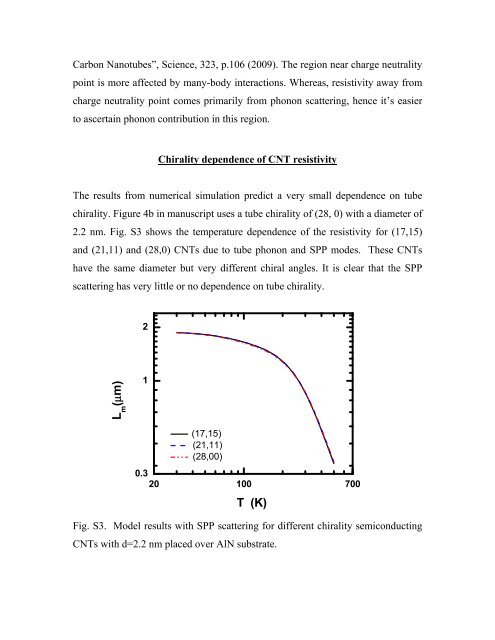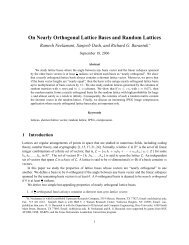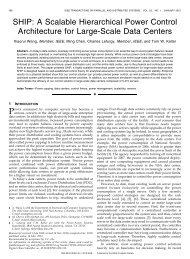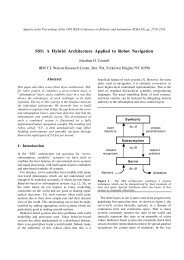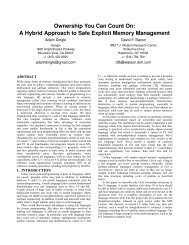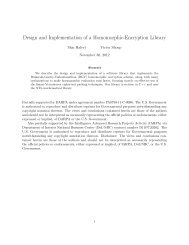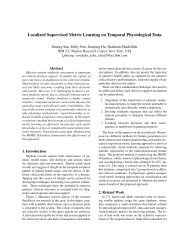Low Bias Electron Scattering in Structure ... - Researcher - IBM
Low Bias Electron Scattering in Structure ... - Researcher - IBM
Low Bias Electron Scattering in Structure ... - Researcher - IBM
You also want an ePaper? Increase the reach of your titles
YUMPU automatically turns print PDFs into web optimized ePapers that Google loves.
Carbon Nanotubes”, Science, 323, p.106 (2009). The region near charge neutrality<br />
po<strong>in</strong>t is more affected by many-body <strong>in</strong>teractions. Whereas, resistivity away from<br />
charge neutrality po<strong>in</strong>t comes primarily from phonon scatter<strong>in</strong>g, hence it’s easier<br />
to ascerta<strong>in</strong> phonon contribution <strong>in</strong> this region.<br />
Chirality dependence of CNT resistivity<br />
The results from numerical simulation predict a very small dependence on tube<br />
chirality. Figure 4b <strong>in</strong> manuscript uses a tube chirality of (28, 0) with a diameter of<br />
2.2 nm. Fig. S3 shows the temperature dependence of the resistivity for (17,15)<br />
and (21,11) and (28,0) CNTs due to tube phonon and SPP modes. These CNTs<br />
have the same diameter but very different chiral angles. It is clear that the SPP<br />
scatter<strong>in</strong>g has very little or no dependence on tube chirality.<br />
2<br />
L m<br />
(μm)<br />
1<br />
(17,15)<br />
(21,11)<br />
(28,00)<br />
0.3<br />
20 100 700<br />
T (K)<br />
Fig. S3. Model results with SPP scatter<strong>in</strong>g for different chirality semiconduct<strong>in</strong>g<br />
CNTs with d=2.2 nm placed over AlN substrate.


